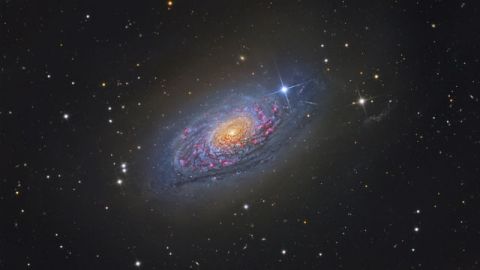Big Bang’s Smoking Gun

What researchers are calling “cosmology’s missing link” has been detected, providing a “smoking gun” for the Big Bang Theory.
Discovery reports:
For the first time, scientists have found direct evidence of the expansion of the universe, a previously theoretical event that took place a fraction of a second after the Big Bang explosion nearly 14 billion years ago.
We all know that the universe is big. Really big. But just how large is it?
The clue is encoded in the primordial cosmic microwave background radiation that continues to spread through space to this day.
Scientists found and measured a key polarization, or orientation, of the microwaves caused by gravitational waves, which are miniature ripples in the fabric of space.
Gravitational waves, proposed by Albert Einstein’s General Theory of Relativity nearly 100 years ago but never before proven, are believed to have originated in the Big Bang explosion and then been amplified by the universe’s inflation.
This major milestone was uncovered by a team of scientists led by John M. Kovac of the Harvard-Smithsonian Center for Astrophysics, including physicists from John Hopkins University and the University of Minnesota. Using a special telescope in the South Pole, they were able to detect gravitational waves in the universe’s fossil radiation and identified polarization signals as far stronger than anticipated, according to Discovery. In a press conference, the research was compared to finding a crowbar in a haystack.
“This is not something that’s just a home run, but a grand slam. It’s the smoking gun for inflation. It hints at unification of the fundamental forces at energies 10 trillions of times higher than those accessible at the Large Hadron Collider at CERN,” physicist Marc Kamionkowski told reporters.
This is one of the most exciting scientific discoveries since the Big Bang Theory itself. We look forward to bringing you discussions from our experts on what this means and new insights. To understand what put the “bang” in the Big Bang, watch this interview with Big Thinkexpert Michio Kaku.




